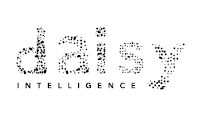
Applying Large Language Models (LLMs) in Retail and Insurance
 Daisy Intelligence
Daisy Intelligence
There continues to be massive interest in Large Language Models (LLMs) due to advancements in artificial intelligence (AI) and natural language processing; ChatGPT being the most notable example. Despite this enthusiasm, there remains a significant gap in understanding how, and where, we can apply LLMs effectively.
In this blog, we will break down the capabilities of LLMs and explore how they can support complex decision-making in business contexts; using examples from the retail and insurance industries.
What Makes an AI Tool Effective
To be effective, AI systems must have two elements:
- A set of dynamics that describe how decisions or other factors impact a system of interest
- An optimal decision-making policy given those dynamics
System Dynamics
%20in%20Retail%20and%20Insurance%20(1).webp?width=724&height=483&name=Applying%20Large%20Language%20Models%20(LLMs)%20in%20Retail%20and%20Insurance%20(1).webp)
LLMs identify the underlying dynamics within text-based systems, such as in written language or software programming language. By understanding the dynamics that govern human language, for example, LLMs can produce content that appears human-generated. However, they cannot guarantee the accuracy of the generated content. While LLMs can produce amazingly coherent sequences of words, they do not understand the semantic meaning of those word sequences. Their outputs are what is most likely to be, but not necessarily, correct.
The dynamics of some systems can also be learned from data using various machine learning methods, like predictive analytics. However, this method only works well for simpler systems. It falls short when dealing with complex dynamics, such as those found in the sciences or in business industries like retail and insurance. This is when specifying the dynamics through human invented differential equations like the governing laws of physics or proprietary theories - e.g., Daisy's Theory of Retail™ and Theory of insurance™ - becomes essential. This is the scientific method; a human invented mathematical theory which verifies past experiments, explains previously unexplainable experimental anomalies, and proposes new conclusions which need to be experimentally validated. It is how the world has established the current paradigms of modern physics and engineering.
Optimal Decision-making
Distinguishing between system dynamics and decision-making is critical, and is often missing from the conversation about AI. The ability for a system to make decisions is distinct from the system's dynamics. Decision-making is also what differentiates autonomous AI. While LLMs are capable of generating content, they don't provide direction on how that content should be used or interpreted; instead, they depend on human guidance for direction and context.
Decision-making is typically a use case of reinforcement learning systems or control theory. They can simulate the impact of decisions (and external factors) using the dynamics of that system; identifying which decision or sequence of decisions will result in a desired outcome.
Applying LLMs to Support Business Decision-making
%20in%20Retail%20and%20Insurance%20(1)%20(1).webp?width=724&height=483&name=Applying%20Large%20Language%20Models%20(LLMs)%20in%20Retail%20and%20Insurance%20(1)%20(1).webp)
In combination with reinforcement learning, LLMs can be applied to support decision-making. For example, Daisy has been developing an LLM interface for our daily recommendations. The LLM translates users’ business queries into decision recommendations by interacting with Daisy’s reinforcement learning system. The marriage of these tools saves users substantial time by improving user experience and providing recommendations that are highly targeted and relevant to an individual user.
In retail, users can ask our LLM questions like:
- What product should I promote in my category this week?
- I don’t want to promote Brand X Pasta Sauce, what is the next best recommendation?
- How many units of Brand X Pasta should I allocate to each of my stores?
- What is the best price point for Brand X tomato paste?
In insurance, similar queries may look like:
- Should payment for X claim be denied?
- Should investigative action be taken for X claim?
- Does X application meet the risk assessment criteria? Should the policy be underwritten?
Today’s LLMs have a number of exciting capabilities that have propelled them to the forefront of conversations about AI. However, it is important that we broaden this conversation to include the features that make AI effective, and to explain why LLMs are not suitable alone for complex tasks.
Vitally, we must apply established engineering practices, like reinforcement learning and control theory, to system dynamics; which are separately learned and independent of optimal decision-making. By integrating LLMs with these practices - such as in Daisy's approach - we can make them more effective and utilize them to enhance decision-making in business.





